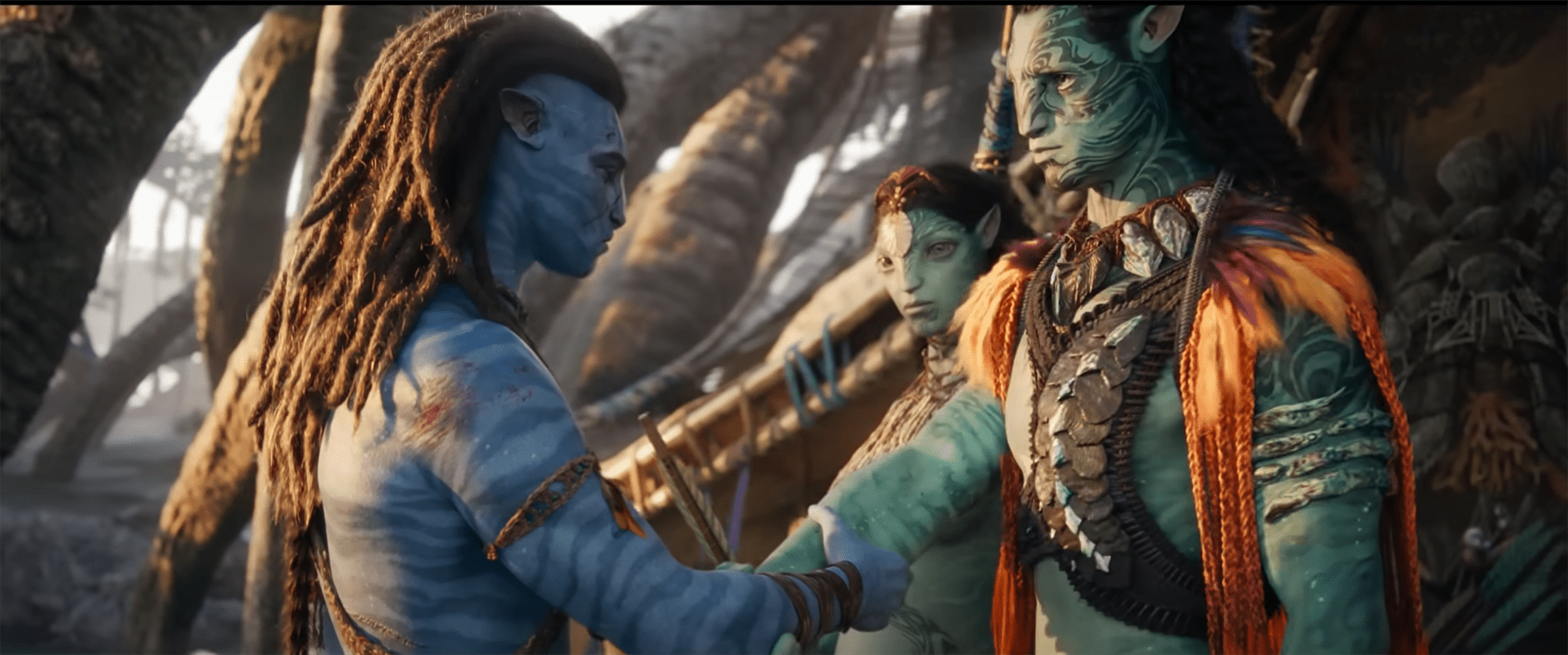Back in 2009, “Avatar’s” innovative technological achievements in filmmaking, as well as storytelling, made a massive impact on the film industry. The film soon claimed its noble title as the highest-grossing film of all time and remains that to this day.
“Avatar: The Way of Water” might not have the same impact as its predecessor, but it does not fall short of wonderment.
The story picks up years after the first “Avatar.” Jake Sully (Sam Worthington) thrives as the chief of the Omatikaya tribe while raising his family with his wife, Neytiri (Zoe Saldana), and their three kids, Neteyam (Jamie Flatters), Lo’ak (Britain Dalton) and Tuk (Trinity Bliss), along with their adopted daughter, Kiri, an offspring from Grace Augustine’s avatar (both played by Sigourney Weaver).
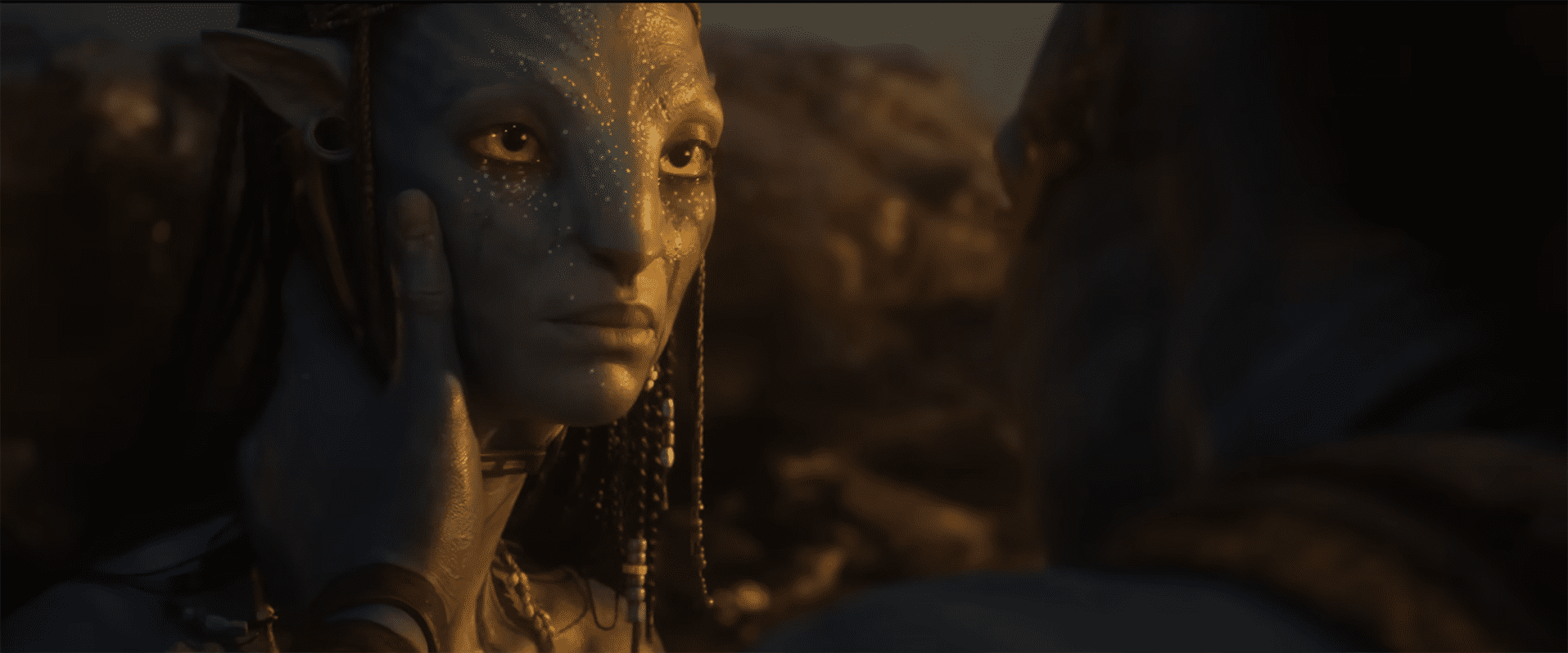
Saldana gracefully portrays an emotional mother and warrior that complements Worthington's headstrong persona.
Photo courtesy of 20th Century Studios
As their kids grow and live among the human that chose to live peacefully with the Na’vi, they have become inseparable from Spider (Jack Champion), a Pandora-born child from the late Colonel Miles Quaritch (Stephen Lang). Soon, an adversary from the past threatens the tribe and forces Jake and his family to leave their home to avoid another war against the human colonizers. Ultimately, they seek refuge in another tribe near the eastern seaboard where they have to adapt to the lifestyle of the ocean. As Jake and his family start to feel accepted, the war follows them, leading them to have no other choice but to stand their ground.
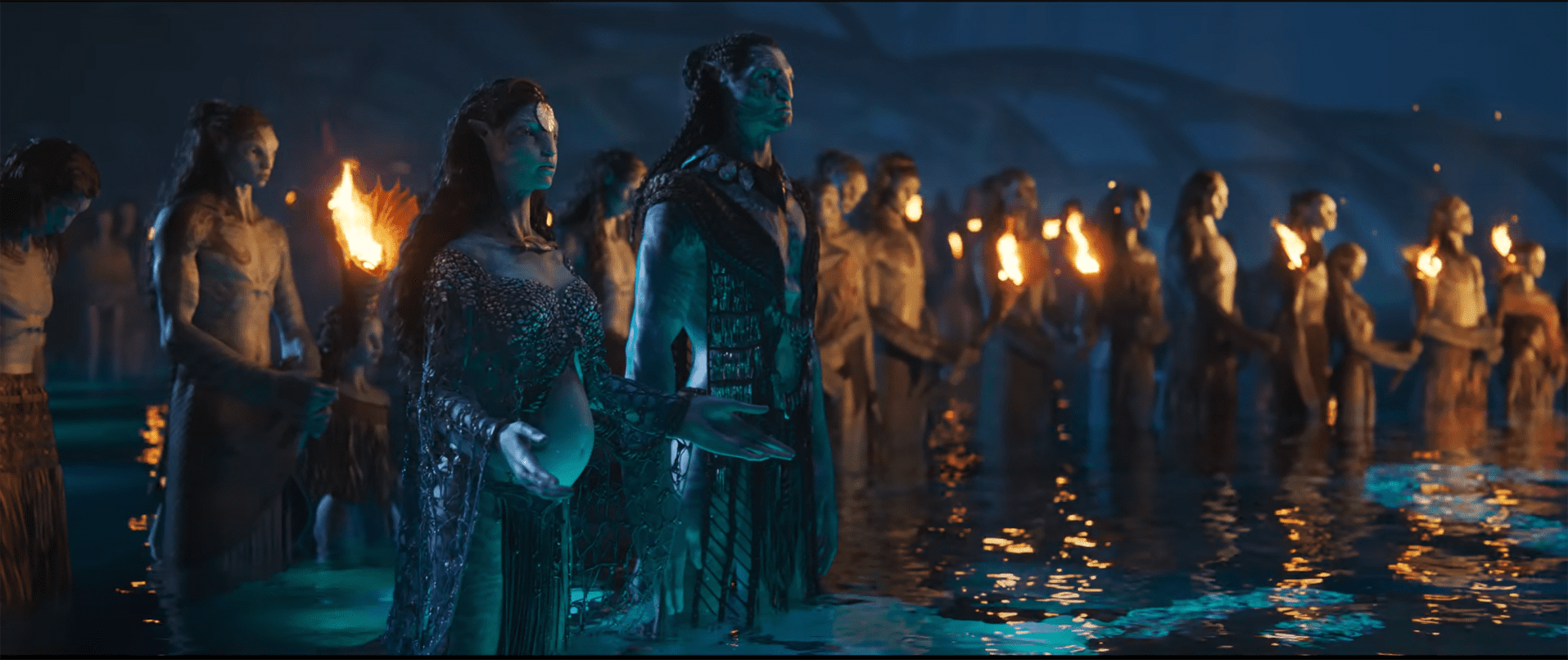
"Avatar: The Way of Water" features some of the most marvelous visuals that push the boundary of 3D modeling.
Photo courtesy of 20th Century Studios
The biggest takeaway from the film is its incredible, breathtaking visuals. The visual effects team does a masterful job of fully realizing Cameron’s vision. From the characters’ models to the creation of Pandora’s seaboard, the movie-goer is completely immersed. Under Cameron’s amazing directions, the film’s dazzling imageries and graphics serve a purpose; they significantly contribute to the characters’ journey and hardships—nothing here feels too out-of-place as the story progresses.
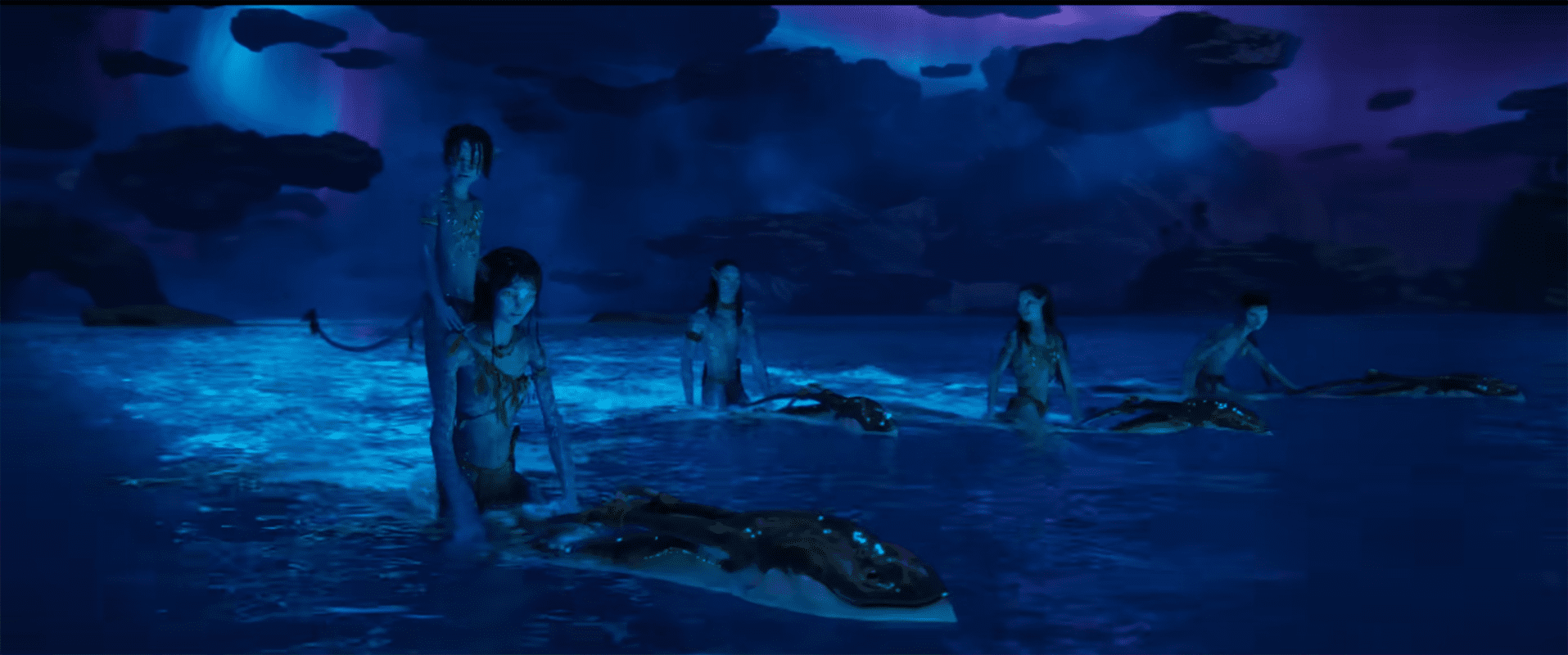
The creation of Pandora is remarkably immersive, down to the very last details.
Photo courtesy of 20th Century Studios
To top it off, the film features jaw-dropping action sequences that deliver grand explosions. Between the stunt choreography and mind-blowing graphics, the level of hard work to create these set pieces are greatly appreciated. Heart and dedication can be vividly seen and admired within every frame. At some point, the line between motion capture and reality becomes undistinguished. Combined with fantastic sound mixing, a visceral score and exceptional editing, the film makes the immersive experience all the more gripping and entertaining.
The film’s cinematographer, Russell Carpenter (who won an Oscar for “Titanic”), does an excellent job of amplifying the viewing experience with gorgeous establishing shots and luminous lighting systems that feel wonderous and lustful. The world of Pandora never ceases to look like a moving painting, existing beyond reality.
The ensemble, including newcomers like Kate Winslet and Cliff Curtis, really brings out the humanity of the film even if most of them are portraying another species. As always, Saldana delivers her best when it comes to playing an emotional component to the main protagonist. Besides her, the young cast also rounds out the ensemble, doubling up on the emotions for the story to progress. Worth noticing is how the new additions to the cast truly complement the veterans, especially Winslet, who has some amazing scenes.
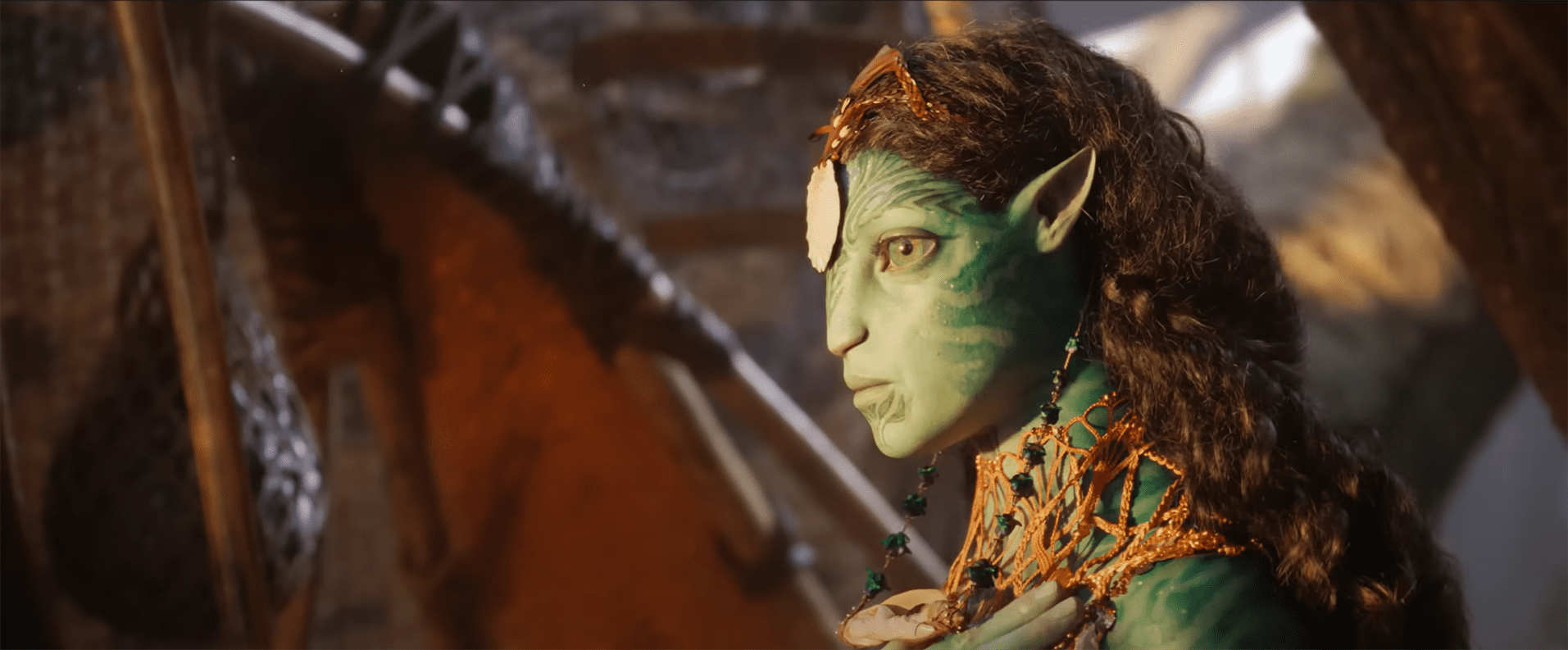
Ronal (Kate Winslet) co-leads the tribe of Metkaynia with bravery and vulnerability.
Photo courtesy of 20th Century Studios
At Cameron’s helm, the story does an outstanding job setting up the next chapter in the “Avatar” franchise with many possibilities as to where the core characters could end up.
Underneath all of the majestic visuals, the story as a whole lacks substance compared to the first “Avatar.” Of course, some enticing puzzle pieces will hopefully have an emotional pay-off in the next installment, but at times, the story feels derivative and safe—nothing the audience hasn’t seen before. Complexity only surfaces when the main protagonist and the antagonist encounter their own family drama and conflicts, which is enough to distinguish itself from other repetitive action blockbusters. Nonetheless, the film is well-rounded and cohesive with some dynamic elements that keep viewers engaged.
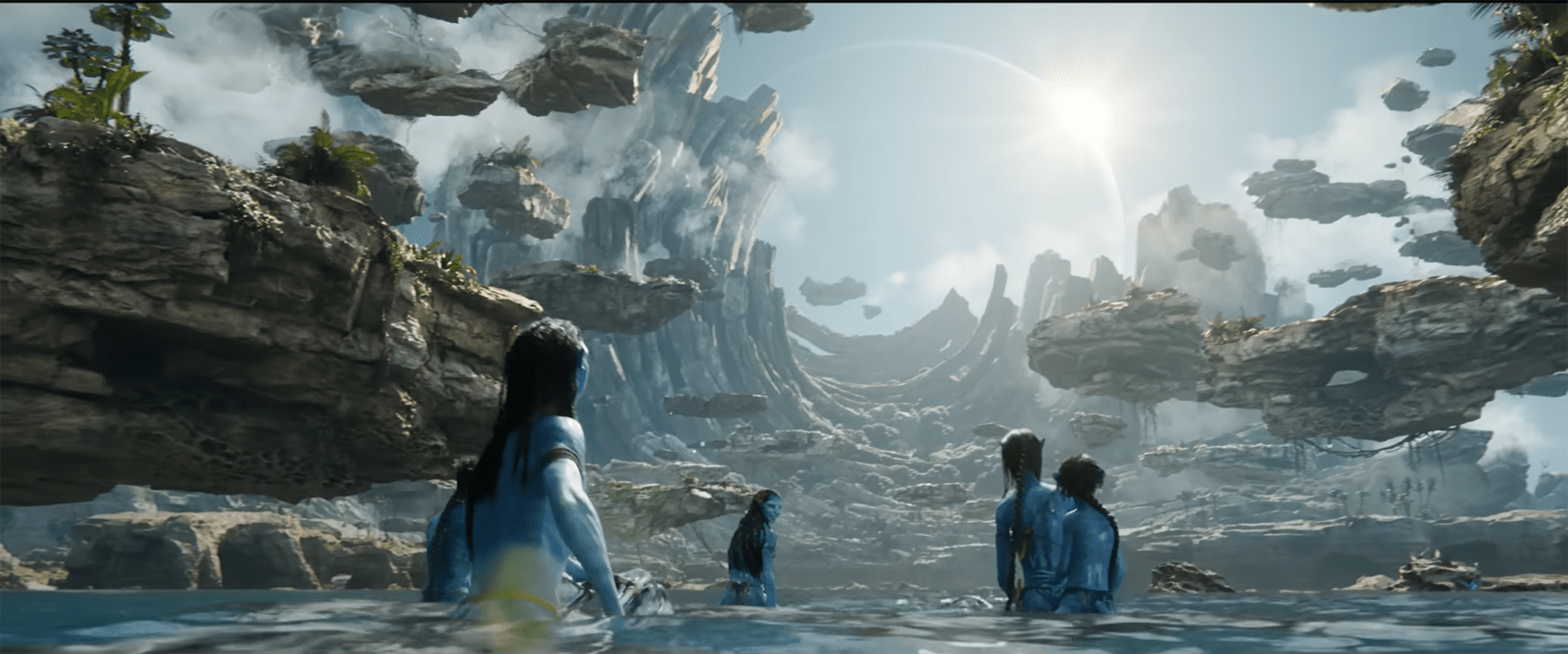
The graphics showcasing James Cameron's vision are beyond incredibility.
Photo courtesy of 20th Century Studios
“Avatar: The Way of Water” is worth the 13-year wait; Cameron’s directions are always purposeful and creative, making the most out of his remarkable vision. Yes, the narrative does have weak spots and seems formulaic at times, but the heart and emotions remain strong throughout the experience. Not to mention, the visual effects transform the film into another dimension with jaw-dropping sequences and exceptional world creation, setting a new technical standard for the industry.
“Avatar: The Way of Water” might not be the best sequel, but it is still a solid, entertaining film with breathtaking graphics that will leave viewers speechless.

